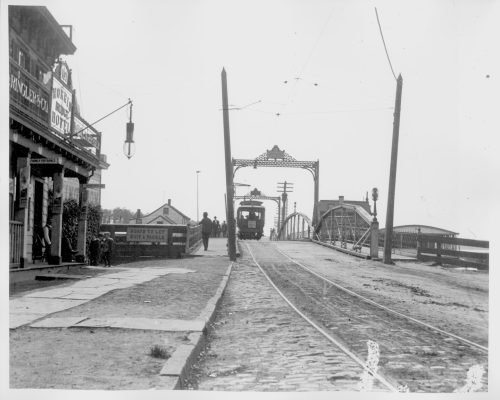
Currently, it flows northbound from Kew Garden HIlls for about four miles before emptying into a bay without much fanfare. But Flushing River has a fascinating history that begins in the Pleistocene Era and winds through fishing, quail hunting, industry, human-made diversions, World’s Fairs, chop shops, and literature.
Learn more when Queens Historical Society Executive Director Jason D. Antos presents his Flushing River slide show at Kingsland Homestead in Flushing on Sunday, Feb. 2, at 3 pm. The presentation is accompanied by an exhibition on the second floor that features archival photographs and illustrations that span more than 350 years.
General admission to the lecture costs $15. Visit Kingsland for $5.
The waterway was a sportsman’s paradise for many years, Antos informs, and its history is full of colorful characters such as Henry “Harry” Hill, an Englishman who ran a hotel and pavilion there in the late 1800s. It attracted people who love the outdoors as well as gamblers, politicians, pugilists, and members of the underworld. (A fire destroyed the venue in 1893.)
Antos will also discuss the Wahnetah Boat Club, which was one of the country’s biggest rowing academies in the early 1900s, and maybe even F. Scott Fitzgerald who wrote about the area when it was known as the “Valley of Ashes” in The Great Gatsby.
Two More Exhibitions
If you attend the Flushing River presentation and/or exhibition, don’t miss two other shows that are currently on display on Kingsland’s first floor: Remonstrance! A History of Social Justice in Queens and Moving Kingsland.
Also curated by QHS Executive Director Antos, Remonstrance! depicts images of local residents protesting against eminent domain and for women’s rights and better wages. One section is dedicated to the Flushing Remonstrance, which historians consider the model for parts of the U.S. Constitution’s Bill of Rights.
Moving Kingsland contains photos of Kingsland being relocated twice.
Plus, Kingsland, where QHS is headquartered, is a great place to explore. Located at 143-35 37th Ave., the two-story Long Island half house (wide side hall with double parlors off to one side) dates to the late 1700s. It has a gambrel roof, a crescent-shaped window in a side gable, a Federal-period chimney piece with an iron Franklin stove, and a Dutch-style, two-level front door. On the second floor, the Victorian Room features a melodeon, lacework, and items such as family notebooks. Everything is arranged to reflect life in 1870, when 10 people – two young couples and their children – lived there.
Image: Queens Historical Society
